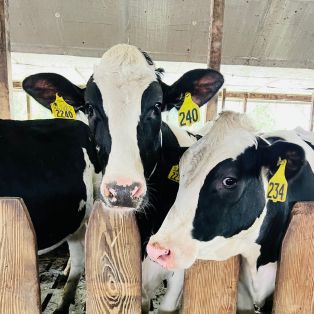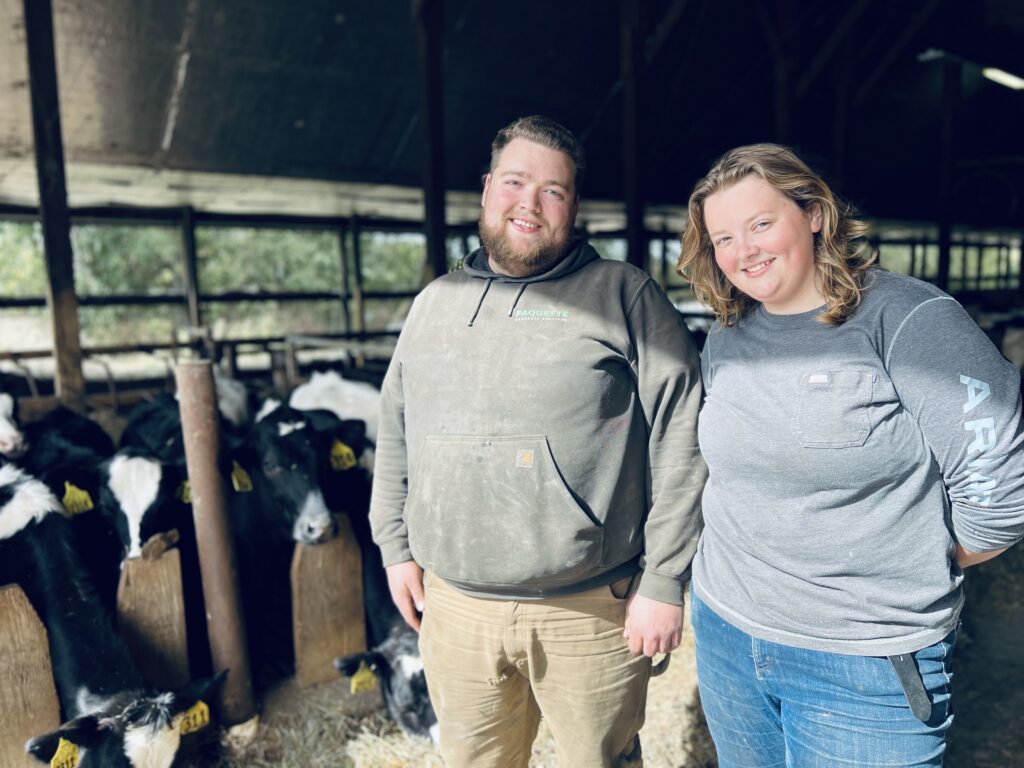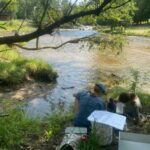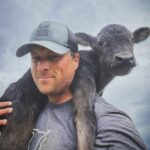
DeGraaf Dairy has been a member of the Champlain Valley Farmer Coalition since 2014
For the past year, we’ve been focusing on creating a supportive environment for the next generation of farmers to thrive in Vermont. These farmers face an exciting future with promising new technologies that are both good for the environment and good for their bottom line.
At the same time, they’re concerned about profitability and sustainability as prices fluctuate, input costs rise, the labor market tightens, regulations increase, and climate change results in less predictable weather patterns.
One such farmer is Nick DeGraaf, a 29-year-old second generation operator of DeGraaf Dairy in Richmond. Nick, whose primary responsibilities are feeding the cows and overseeing most crop work, farms alongiside his mom Anje, dad Harold, and younger siblings Tristan and Renae. Together, they milk 165 cows while raising 150 youngstock. They’re part of the Dairy Farmers of America (DFA) Co-op, but all of their milk goes to Agrimark to make Cabot products.
When we visited Nick on a bright October afternoon, the DeGraafs had just finished chopping all 160 acres of corn. They had their sights on planting cover crops and cutting grass, but a surprise 3.5 inches of rain a few days prior put a wrench in those plans.
“We went from finally having dry fields to having standing water again,” Nick says.
This is a scenario he and his family have become accustomed to this year, like many farmers across Vermont. DeGraaf Dairy, which is situated near the Winooski River, was heavily impacted by the flooding in July. They had been waiting with bated breath until harvest time to see the long-term effects on their crops.
They initially believed they lost 30 acres of corn, but it ended up being closer to 40. Their yields per acre were about half of what they’d normally see–10 tons versus 20. In turn, they’ve bought 1200 tons of corn silage to meet their needs. They were able to purchase 350 tons from a neighbor, and found the rest at a farm ten miles away. For farmers like the DeGraafs who try to grow all of their own feed for their livestock, purchasing silage is a significant, unexpected cost.
The July flooding has implications for next year’s crops, as well.
“I’m curious what the weed pressure is going to be like next year with the introduction of what the flood waters brought in,” Nick explains. “I’ve definitely seen some weed pressure that came back after the flooding, especially where the corn was struggling.”
Whatever the future may hold in terms of soil health, water quality, and climate, the DeGraafs are preparing by continually experimenting with new practices to help them adapt to a changing world.

For one, they were early adopters of cover cropping a dozen years ago, which has required a lot of trial-and-error when it comes to equipment, species, and crop management.
They used helicopters to plant cover crops with mixed results for a couple of years. They eventually switched to a drill, initially borrowing equipment from UVM Extension and then a neighboring farm. Four years ago, they were able to purchase their own drill thanks to the Capital Equipment Assistance Program (CEAP) through the Vermont Agency of Agriculture, Food and Markets.
As part of this, the DeGraafs have tried double-cropping with rye and triticale. While rye has its drawbacks, it has become their preferred crop.
“It’s a nice extra source of feed,” says Nick. “We like the feed quality, the digestibility, and some of the extra kick it brings in with the higher sugars than a normal grass would have.”
And to better ensure their cover crops can successfully take root before winter sets in, the DeGraafs have also changed what kind of corn they plant.
“We’ve shortened our day-length of corn so we can get our cover crop on early enough,” explains Nick.
While Nick and his family are very pleased with their cover cropping experience, there are a few practices that require further study. For example, this past spring, they applied manure instead of fertilizer to a few acres of double-cropped triticale. They had hoped this would jumpstart the triticale, but the opposite happened. Instead, they ended up with a lower yield on those acres.
They’ve also tried their hand with strip-tilling, which creates an 8”-wide seed bed while leaving the soil around it undisturbed. This helps to warm up the soil for the seed, while maintaining structures critical for soil health. They may return to this practice at some point, but for now, they’re sticking with no-till.
“It’s been a learning curve, for sure!” Nick is quick to add. “With mixed results every year. Some years have been good, some years have been questionable. We’re just trying to find a way to maximize our work.”
As Nick and his family look to the future, there are more environmentally friendly practices they hope to implement.
“Manure injection is the next one on our list,” says Nick. “We might buy our own equipment, or our custom operator is interested, as well. From a technological standpoint, everything is there to implement the practice, we just need the equipment.”
For Nick and his family, all of this experimentation and aspirations for the future serve a greater purpose.
“If you don’t care for your land, it’s not going to take care of you,” Nick shares. “If you keep your land healthy and productive, it will provide you with the feed you need.”
Nick’s advice to his fellow farmers who are looking to try new things?
“Don’t be afraid to ask others about the challenges and benefits they have found,” he explains. “Nobody’s farmland is the same, and what’s needed to be successful might be totally different. But you can take the advice home and find something that works for you.”




